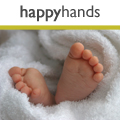Pregnancy Clinic
Labour & Birth
Pain relief in labour
Whether breathing and meditation carry you through or you end up having an epidural, pain relief not only makes the labour and birth a more happy experience, it can also help reduce the risk of trauma. Don’t feel you have to be a hero, but do understand what the different kinds of pain relief can offer so that you can get a better picture of what might be best for you.
Gas and air
Entonox offers you a combination of oxygen and nitrous oxide via a mouthpiece that you inhale from during painful contractions. Its effects are passing but do help relieve the pain, whilst the gas has no effect on your baby. This is a useful option for home births where a midwife can oversee its administration. However for some people gas and air either makes them feel queasy or does not have any strong effect.
TENS
A TENS machine (it stands for transcutaneous electrical nerve stimulation) works by blocking pain signals to the brain and instead stimulating the body’s production of endorphins. This is done via small electrical currents passing through small pads which you place on your back. The pulses are not so strong as to be harmful to you in any way, and do not affect your baby. A TENS machine is particularly effective when used from the earliest contractions; the signals can be increased in strength as you go through your labour.
Pethidine
This is a pain-killing drug. It can be useful for women in a great deal of pain, who need to be able rest if the labour is taking a long time. As it is a drug, there is a risk that it will have a short term affect on you or your baby, such as nausea, shallow breathing or drowsiness. It is common practice not to administer this drug too close to the end of labour, as this is when it is most likely to affect the baby.
Epidural
This is a local anaesthetic that is injected into your spine to block pain signals from your body passing to your brain. A fully qualified anaesthetist must carry out this procedure and you will need to be cleared as medically sound. Having the epidural can be quite uncomfortable and beyond a certain point in labour it may no longer possible to administer it. However, an epidural does still enable you to have a fairly active part in pushing during birth, and in some cases it might not completely block out all pain. It can have side effects for you, including a headache or a drop in blood pressure.
Birth pool
Water can be great for easing pain. Before you are ready to go to the hospital or clinic, having a warm bath can help ease early contraction pain, and once you are there, a birthing pool will greatly help even if you do not wish to give birth in the water.
Active birth and alternative methods
Massage, moving around, meditation, Hypnobirthing and breathing exercises can be incredibly effective for many women who want to keep their birth as natural as possible. If you want to try using these methods it’s a good idea to sign up for antenatal classes in these specific areas, to help you prepare for the labour and birth.
Related Articles
The Pudding Club Maternity Hire
New Technology for an App-ier Pregnancy
Maybe Baby - New Fertility Tester
Shiva Rea's new mother and baby yoga DVD
First Aid courses from an award winning London based company
First aid training that could help save a life
What we all should know about Asthma
The Portland Hospital Welcomes Visitors to Pregnancy Open Day on Sunday 22nd of November 2015
What to do when a child is choking
Related Products
Lala and Bea, Organic Nourish Oil
Weleda, Stretch Mark Massage Oil
Related Forum Topics
Forums: Pregnancy
Re: Has anyone tried Zita West's fertility supplements? Or what else worked for you?
Guider, Mother of 1, Leicestershire
Have Your Say
Be the first person to comment on this article, just post a comment below.





In order to post a comment you need to be a member. Join Now | Sign in